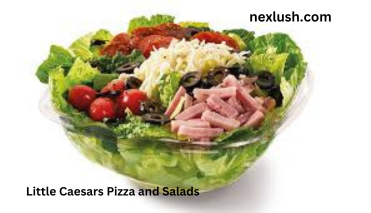Little Caesars successfully reached out to a wide age range by featuring commercials with absurd situations and quirky characters that made audiences and Madison Avenue laugh. Little Caesars came to be known for these ads produced by Cliff Freeman & Partners; audiences came to expect their comedic commercials with incredible regularity.
Pizza
A dish composed of a thin bread disk covered in olive oil, tomatoes and mozzarella cheese topped with other ingredients (and variations thereof), quickly baked before being cut and served hot. Pizza represents one of mankind’s greatest expressions of creativity: by combining any available items together to form something deliciously appealing and tasty!
Pizza crust may be thin or thick, and may be plain or seasoned with garlic or herbs for flavor. Sauces can range from sweet to savory flavors; toppings can include meats, vegetables, cheeses or other items. Pizzas may be folded in half turnover-style before deep frying for added ingredients!
Yeast is essential to producing pizza’s iconic soft, fluffy texture and acts as an organic leavening agent, releasing gases that help expand dough.
Before mixing yeast and water together, the ideal temperature should be room temperature; otherwise it won’t activate and produce dough that has an unpleasant, pungent odor after baking. Salt helps activate yeast while sugar promotes rapid rising. Water should ideally be at a lukewarm temperature; hotter temperatures could kill off its activating bacteria. Pour enough lukewarm water to fill a medium bowl.
Breadsticks
Nothing beats the taste and irresistibility of soft garlic butter-topped breadsticks! From snacking on them alone or dunking them in marinara sauce as an easy dinner to pairing them alongside soups and stews such as chicken gnocchi, sausage tortellini, or lasagna soup; they make an irresistible treat that pairs beautifully. Plus they add an irresistible crunchiness to salads!
These delicious breadsticks are an easier alternative to Olive Garden’s famous Grissini Strati – you only need 1 hour from start to finish and no mixer will be required!
This recipe is extremely flexible; feel free to experiment with different types of flour – all-purpose, bread flour, spelt or any combination thereof will all work wonderfully in this dough recipe. Just be sure that active dry yeast rather than instant yeast is used when starting this project!
Once the dough has finished rising, divide into 12 equal sections and roll each into a 9 inch rope on a floured surface. Place on a baking sheet, cover, and let rise again for 1 hour before placing back into the oven until golden-brown color appears – approximately 15-20 minutes.
While the breadsticks are in the stove, whisk together margarine and garlic salt for their garnish. Once done, brush your breadsticks with this delicious topping, before topping with Parmesan cheese for extra garnishing!
Salads
Salads are an easy, delicious way to add variety and nutrients into your diet. From classic green salads with cheese to more complicated creations that feature vegetables, protein and extras – salads provide endless opportunities for creativity!
Tossed salads are simple to create in no time at all! Simply tear apart your desired leafy greens, place them in a bowl, and begin layering in toppings such as vegetables, dressing or any other favorite ingredients that suit your palate.
Add heartier salads by including protein-rich foods like beans, grilled chicken or fish, hard-boiled eggs or hard boiled egg whites into the mix – aim for 15 grams per diner so as to guarantee an appetizing meal-sized salad!
Add crunchy nuts or seeds to your salad for an irresistibly delicious crunch! Soaked or toasted pumpkin, sunflower, sesame and flax nuts provide essential fiber, protein and healthy fats; just remember to use sparingly to maintain an appropriate caloric intake.
Some nutrient-packed salad toppings include tomatoes, bell peppers and radishes; fresh or dried herbs; and ripe avocado. You could even top your salad off with some tasty and protein-rich hummus! Additionally, adding grilled or canned vegetables such as corn or sardines could add additional filling options; seafood lovers might like trying sardines or salmon as they contain omega-3 fatty acids that support heart health while being low in saturated fat content.
Desserts
Dessert is an integral component of every meal, whether or not you consider yourself an accomplished baker. From cookies and cakes to flakey, decadence-filled delights, dessert is often at the forefront of celebrations and holidays alike; but equally popular desserts can take the spotlight during an ordinary Wednesday.
Sugar was brought into Europe during the Crusades and colonial expansion, revolutionising dessert preparation in terms of both cost and accessibility. Thanks to affordable sugar production, desserts became more accessible than ever; you could make ahead, store in freezer and enjoy when desired!
Ingredients of desserts vary, but their base components include flour or starch as a structure enhancer, dairy products which provide moisture and fat, sugar to add sweetness and flavor, and eggs as either leaveners or sources of protein.
Many dessert recipes start as a base recipe, to which you can add different flavors and textures for unique treats. It’s best to start off learning the fundamentals, then alter recipes as needed until they reflect your unique tastes and preferences. Through experimenting, you will gain more of an understanding of how ingredients interact together – ultimately helping you develop more complex recipes while learning improvisation techniques to craft unique treats to share with friends!
Must Read : what is the math playground

[…] Must Read : little seasars pizza and salads […]
Can you write more about it? Your articles are always helpful to me. Thank you!